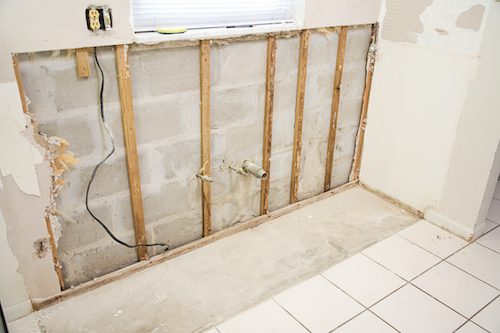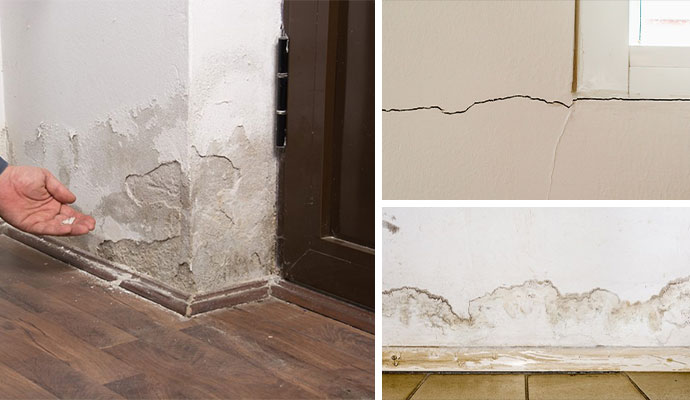Resolving Water Stains on Walls: Assessments and Repairs Tips
Resolving Water Stains on Walls: Assessments and Repairs Tips
Blog Article
Have you been hunting for information and facts about How to Remove Water Stains from Walls and Ceilings?

Water discolorations on walls are not pleasant to the eyes. Your residence must lack discolorations on the walls, roofing, or floorings. That is the optimal state of a residence and also its frameworks. Yet, often it seems practically inescapable to experience water discolorations on walls in homes.
Home owners living in damp areas continuously deal with the fear of water stains on walls. With exact and all-around details on the reasons of water spots as well as timely repair service processes, you will always be a step in advance of such incidents.
3 Common Root Causes Of Water Spots on Walls
In contrast to popular belief, water spots on walls do not always originate from inadequate structure products. There are numerous reasons for water discolorations on walls. These include:
Wet
When warm damp air meets with completely dry cold air, it triggers water beads to base on the walls of structures. This occurs in shower rooms and kitchen areas when there is vapor from food preparation or showers. The water beads can stain the surrounding walls in these parts of your residence as well as infect other locations.
Moist or condensation affects the roof covering and walls of structures. When the wall surface is damp, it creates a suitable environment for the development of microbes and fungi.
Poor Drainage
This will certainly protect against water from leaking right into the wall surfaces. This web links to too much moisture that you notice on the wall surfaces of your structure.
The leading cause of damp wall surfaces, in this case, can be a poor water drainage system. It can also be due to inadequate management of sewage pipes that go through the building.
Pipe Leaks
Most houses have a network of water pipelines within the wall surfaces. It constantly boosts the feasibility of such pipelines, as there is little oxygen within the walls.
Yet, a downside to this is that water leakage affects the wall surfaces of the building as well as causes widespread damages. An indication of faulty pipes is the appearance of a water tarnish on the wall.
Pro Pointer
A houseplant in your house also boosts its humidity. If the home is currently moist, you might want to introduce houseplants with minimal transpiration. An instance of suitable houseplants is succulents.
Water Spots on Wall: Fixing Tips
Home owners would generally desire a quick fix when taking care of water stains. They would certainly quickly recognize this is detrimental as the water spots recur. Below are a couple of practical suggestions that will guide you in the repair of water stains on wall surfaces:
Final thought
Although no person intends to have water spots on walls in their residence, it can take place to the best of us. This short article provides you take advantage of, as you now know how to handle this mishap if it does occur.
It is always best to hire specialist solutions to assist fix the problems in your house.
Occasionally it appears almost unavoidable to experience water discolorations on wall surfaces in homes.
In contrast to preferred idea, water stains on walls do not constantly stem from poor structure materials. There are a number of causes of water spots on wall surfaces. The water droplets can stain the bordering walls in these components of your house as well as spread to other locations.
Right here are a few handy suggestions that will certainly lead you in the repair service of water discolorations on wall surfaces:
CHECKING FOR WATER DAMAGE
Water damage can be costly, and it may begin before you even notice the first signs of trouble. Water damage can cause mold and mildew in your walls and floors, which can create an abundance of health concerns for your family. It can also lead to costly repairs of various appliances and general home fixtures. To avoid the pricey consequences of water damage, here are Warner Service’s top 5 places you should check:
The walls – The easiest place to spot the beginnings of water damage is on the walls and ceilings of your home. If water damage is present, there will most likely be water stains, especially around the windows and doorframes, and/or cracks in the drywall. If a stain looks unusual (discolored to brown, black or gray, raised texture), has a swollen appearance or is soft to the touch, contact a professional immediately. The pipes – To avoid water damage, consistently check the pipes in your kitchen (especially the dishwasher and ice maker), bathrooms, laundry room (specifically washing machines) and basement for corrosion, leaks and water stains. Pay special attention to where the pipes connect in your home and the location of caulking around the bathroom fixtures, including toilets, sinks, showers and tubs. Missing or loose caulking and grout could be signs of leaking water. This seepage can also quickly cause mold and rust, so double check your water heater and tank for wet spots on the floor. The floor – Water damage is very easy to spot on the floor. Look for any warping or buckling of the material, especially in the basement. If your home has wood flooring, look for bright white or dark stains. If your home has carpeting, keep it dry and clean. A damp carpet that smells of mold could cause water damage and health problems. To avoid this, consider installing floor pans under your appliances to help prevent damages from small, slow and undetected leaks. The basement and attic – If your basement or attic smells odd check for mold and mildew around the area, especially the valley where the roof meets. While you are inspecting those areas, check for wall cracks, floor stains, rust and dampness in the insulation. If you live in a colder and/or rainier climate, perform routine checks for water damage from melting snow or ice and rain. The exterior – Check the roof for damaged flashing and missing, cracked or curled shingles. There should also be no standing water anywhere outside your home. This could be caused by puddles, leaky rain gutters or hoses, poor drainage, or short gutter spouts. Invest in a sump pump system or water flow monitoring system, and perform routine maintenance on these outdoor appliances to avoid indoor water damage.

Hopefully you enjoyed our piece on How to Find and Repair Water Leaking in the Wall. Thank you for taking a few minutes to read our piece. Do you know another person who is very much interested in ? Feel free to promote it. We love reading our article about How to Remove Water Stains from Walls and Ceilings.
Perfect solution? Dial! Report this page